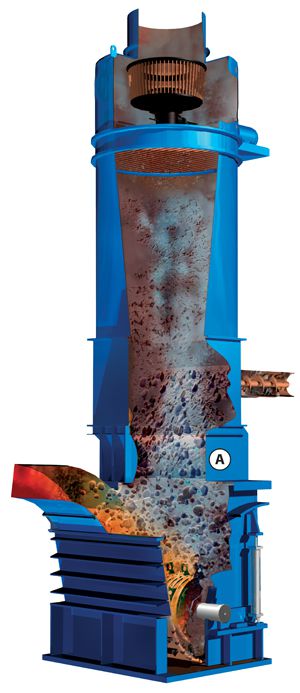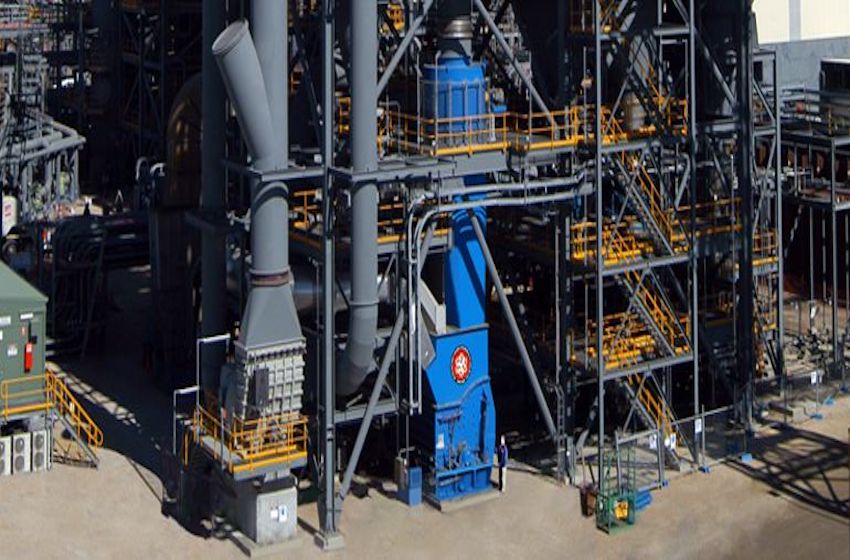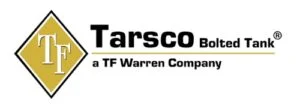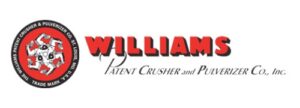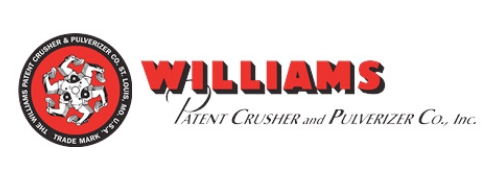
IMPACT DRYER MILLS FROM WILLIAMS CRUSHER
Williams Patent Crusher is an industry leader in the design and manufacturing of Impact Dryer Mills. These machines are used for both grinding and drying to produce premium products at a lower cost.
This is done by reducing the expenses of separate material handling. It dries materials much more efficiently through an innovative heating process. Also, it produces accurate particle sizes for a high-grade finished product.
Learn more about the application and operations of Williams Impact Dryer Mills.
Impact Dryer Mill Applications
Williams Impact Dryer Mills are often referred to as Crusher Dryers or Dryer Mills. Our proven technology is integrated into a complete system for the simultaneous grinding, drying, and classifying of materials. This technology conveys the product in one continuous, automated operation. Some of the many applications for our crusher dryer systems include:
- Drying & grinding by-product gypsum from power plant scrubbers for wallboard manufacturers
- Economical drying & grinding of filter cake (as well as other finely divided clusters) to a fine, dry powder
- Reduce clays, limestone, and other minerals, such as pigments, to extreme fineness
- Grinding coal to proper fineness for burning in suspension or coal gasification
- Complete automation makes grinding, drying, sizing, and conveying a “push button” operation.
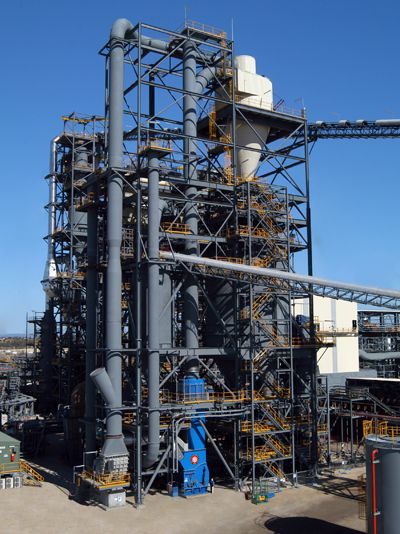
How Williams Impact Dryer Mills Work
The operation of the Williams Impact Dryer Mill system is completely automated. It makes grinding, drying, sizing, and conveying a simple and economical process.
Feeder (A) introduces raw material into the crusher dryer’s grinding chamber (B) along with heated gas. This is set at a rate that is determined by pressure and temperature sensors located in the system and adjusted automatically.
Controlled action by the rotating hammers reduces feed to the desired product size. Simultaneously, the hot gas removes moisture. Drying is greatly accelerated by the increased surface area as the particle size is reduced.
Controlled velocity in the grinding chamber of the impact dryer mills enables the flow of hot gas. This is done to selectively air convey particles, ground to the proper size, up and out of the grinding chamber. Airflow is maintained by the main mill fan (C).
The ground product, suspended in air, passes through the adjustable Williams Impact Dryer Mill Spinner Separator or Turbine Separator (D), where an accurate size classification is obtained. Product-sized material is removed from the airstream by the cyclone collector (E).
Airborne fines remain entrained in the exhaust gas from the cyclone collector. They are moved by a high-efficiency fabric dust collector (F). Extreme fines are transported by a second conveyor (G). An exhaust fan discharges clean gases and moisture from the system.
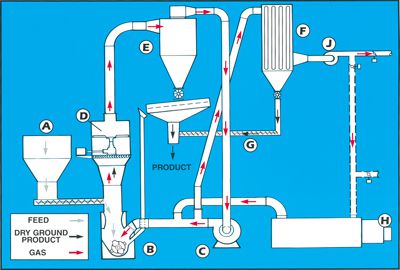
Standard Impact Dryer Mill System
The Standard Impact Dryer Mill System is utilized to grind, dry, and classify materials as fine as possible. It will produce a uniformly fine product in the following manner:
- Controlled velocity in the grinding chamber combined with increased product surface area, resulting from size reduction, accelerates fluidized bed drying.
- Micrometer control of finished product size is possible with Williams Adjustable Spinner Separator. This permits in-process adjustment of the product by means of an externally mounted variable speed drive.
- High-Capacity air conveying: Gases used for drying convey the finished product from the grinding chamber to final storage. Removal of mechanical conveying equipment thereby reduces material handling costs.
- The Impact Dryer Mill is a completely enclosed system. Dustless operation of pneumatic material handling assures cleanliness and reduces housekeeping expenses. A slight negative pressure is maintained to prevent leaks from the system.
- Automatic variable-speed feeders are live-bottom bin feeders for wet, sticky materials, or rotary pocket feeders for granular materials. They are controlled by conditions in the grinding chamber to provide a proper feed rate automatically. The basic Williams rotary pocket feeder, variable rate vibratory feeder, or multiple screw feeder are all available. They help Williams match the feeder to the job for optimum performance in your operation.
- Drive Motors (not shown): Drive motors for the main mill fan, feeder, and separator are standard, readily available TEFC motors.
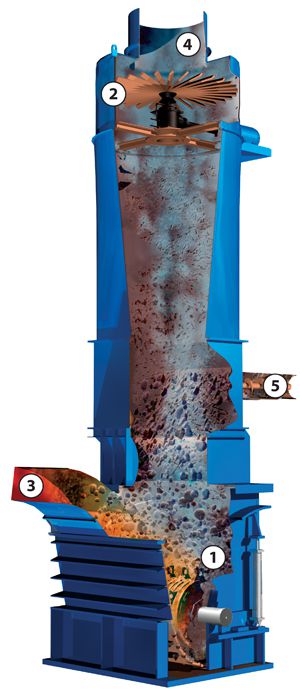
Venturi System Impact Dryer Mill
The patented Williams Impact Dryer Mill Venturi System was developed for processing coal and other materials. This is where specifications require minimum extreme fines for the product.
It is typically installed above the grinding chamber and strips off feed material that is already sized according to specification. This is done so that it does not create excess fines and allows the production of granular products within minimum fines.
For this reason, the feed is normally introduced above the Venturi section (A). High-velocity hot gas conveys material at product size up and away from the grinding chamber. Larger particles fall into the crusher dryer to be reduced. The crushed particles are then redirected back through the Venturi for further separation.
